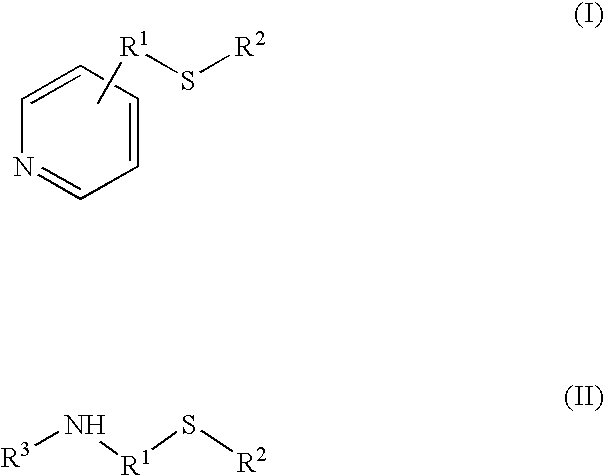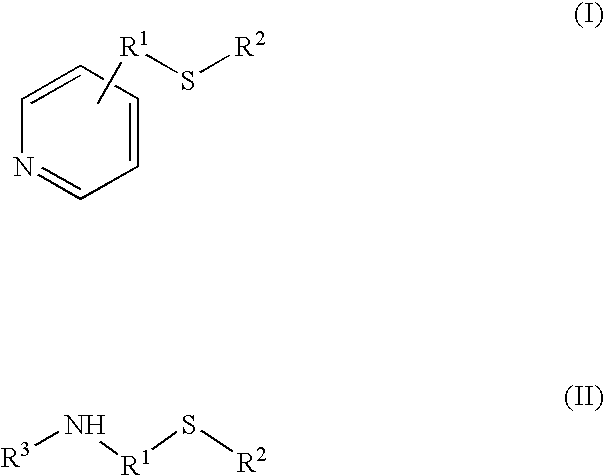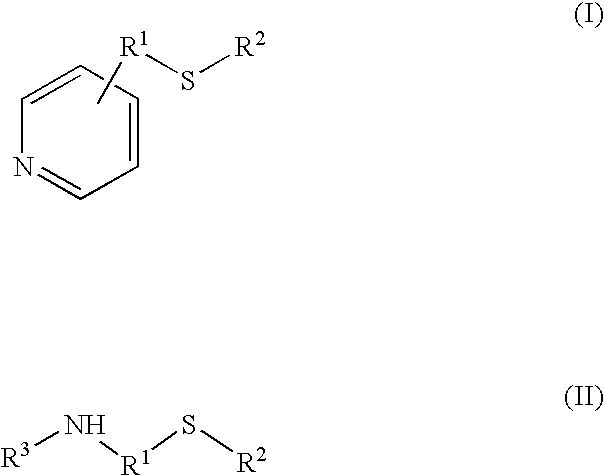Process for the synthesis of bisphenol
a technology of acidic ion exchange resin and bisphenol, which is applied in the direction of organic compounds/hydrides/coordination complex catalysts, physical/chemical process catalysts, organic chemistry, etc., can solve the problem of significant technical difficulty in applying attached promoters to large, commercial scale reactions
- Summary
- Abstract
- Description
- Claims
- Application Information
AI Technical Summary
Benefits of technology
Problems solved by technology
Method used
Image
Examples
examples
[0069]The following examples employ the ion exchange resins shown in Table 1.
[0070]
TABLE 1AcidicDegree ofmeqType of ionTradenamecrosslinkingvalueexchange resinManufacturerLewatit2%~5polydispersedBayermeq / gT-3825*2%~5polydispersedThermaxmeq / gT-3825*2.5% ~5polydispersedThermaxmeq / gT-668%~5polydispersedThermaxmeq / gIndion 1808%~5polydispersedIndionmeq / gCT-2222%>5polydispersedPurolitemeq / gCT-1222% 5polydispersedPurolitemeq / gA1314%~5monodisperseRohm &meq / gresinHaasA1212%~5monodisperseRohm &meq / gHaas*T-3825 is available with differing degrees of crosslinking
[0071]The promoters employed in the Examples are shown in Table 2.
[0072]
TABLE 2StructureName4-pyridylethylmercaptan (PEM)2-aminoethanethiol (cysteamine)
[0073]Neutralization procedure.
[0074]The ion exchange resin was combined with water to form an aqueous slurry which was acidified with para-toluenesulfonic acid. The solution was stirred and deaerated with flowing nitrogen gas for about 30 minutes. The promoter was then added and the r...
examples 1 – 84
Examples 1–84
Single Column
[0077]10–15 grams of the modified ion exchange resin catalyst was packed into a column and held in place by a combination of glass wool and sand. The column was surrounded by a water jacket maintained at a temperature of about 55–75° C. as indicated in Table 3. A feed mixture comprising phenol and about 4.8 weight percent acetone, as shown in Table 3, was added to the top of the column. Addition of the feed was controlled by a pump so as to maintain the weight hour space velocity indicated in Table 3. The effluent from the column was collected and analyzed by acetone titration, water titration and liquid chromatography. As can be seen by the results in Table 3 the small scale reactions show a trend of increasing selectivity with increased attachment level. Selectivity however, generally decreases with an increase in the scale of the reaction.
[0078]
TABLE 3OverallDegree ofAcetoneTempP / PbisphenolEx.PromoterResinNeutralization%(° C.)WHSVselectivityp / p:o / p ratio...
examples 22 – 26
Examples 22–26
Multiple Stage
[0079]Four column, each containing 10 grams of modified ion exchange catalyst were arranged in series. After the modified ion exchange resin was added to the columns the resin was flushed with phenol until the amount of water in the effluent was determined to be less than 1% by Karl Fisher titration. The columns were surrounded by water jackets maintained at a temperature of about 55° C. A total of 5 weight % acetone was added in four equal parts (four additions of about 1.25 weight %). Addition of the feed to each column was controlled by a pump so as to attain an overall space velocity of 1–2 WHSV. The effluent from the columns was collected and analyzed by acetone titration, water titration and liquid chromatography. Results are shown in Table 4.
[0080]
TABLE 4OverallDegree ofNumber ofTempbisphenolExamplePromoterResinNeutralizationAcetone %Acetone stages(° C.)p / p selectivityp / p:o / p ratioConversionselectivity22CysteamineLewatit16545596.7941.480.599.1323Cy...
PUM
| Property | Measurement | Unit |
|---|---|---|
| temperature | aaaaa | aaaaa |
| temperature | aaaaa | aaaaa |
| temperature | aaaaa | aaaaa |
Abstract
Description
Claims
Application Information
 Login to View More
Login to View More - R&D
- Intellectual Property
- Life Sciences
- Materials
- Tech Scout
- Unparalleled Data Quality
- Higher Quality Content
- 60% Fewer Hallucinations
Browse by: Latest US Patents, China's latest patents, Technical Efficacy Thesaurus, Application Domain, Technology Topic, Popular Technical Reports.
© 2025 PatSnap. All rights reserved.Legal|Privacy policy|Modern Slavery Act Transparency Statement|Sitemap|About US| Contact US: help@patsnap.com



